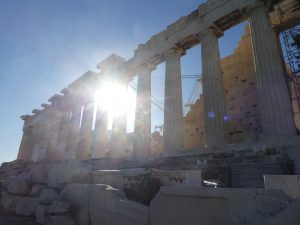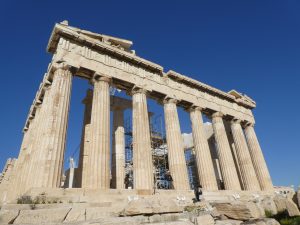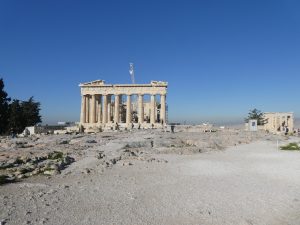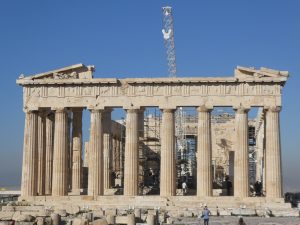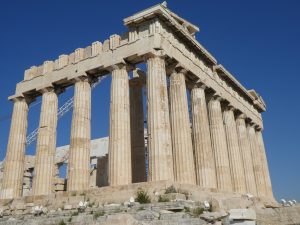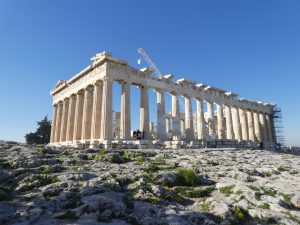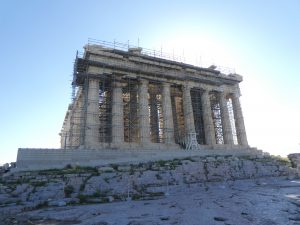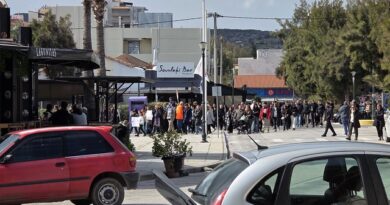Athens – Parthenon
They doesn’t seem much point writing a lot about the Parthenon, since it’s one of the most important historic sites in Europe and there’s no shortage of information readily available.
But, in short, the Parthenon was built as a temple between 447BC and 432BC and it was later used as a Christian church and then as a mosque. Unfortunately the building was partly blown up in September 1687 when gunpowder in storage caught fire. Today the building is iconic and is one of the enduring symbols of Athens, primarily due to its prominent location.
I had a pass to visit a number of historic sites and I left this to the last day possible deliberately as I thought that a Monday morning might be a little quicker. I also got to the site at around 08.15 (and discovered there’s no rush hour on the metro) before it got too busy. And before it got too hot….
The pass meant that I didn’t have to queue up for a ticket and I was able to walk straight through to the Acropolis (the hill that the Parthenon is on). There were a few tour groups and a few visitors, but it was generally quiet when I was there. It did though get much busier as I worked my way back down to the Southern Slope of the Acropolis.
Signage is reasonably good at the site, although I’d still rather that the museum just gave out a small map of the site to visitors who wanted one, to help put everything in context. But, it was clean and organised, and I was pleased that I didn’t have to queue.
What it’s like in summer I can’t quite imagine, it must be quite challenging waiting in queues, being hustled along and then standing in the Greek summer heat. So visiting early on a Monday morning in March seems like a good idea.
Anyway, that’s enough text. Here are my photos from earlier today.

